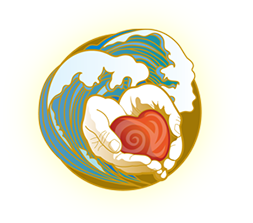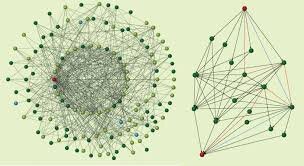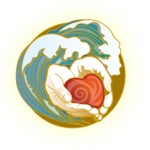By Susan Raffo – Go to her blog HERE
Every day, social media is overflowing with new articles, essays, google docs and screenshots of strategies and tactics for surviving and thriving over these first weeks of large coronavirus awareness in the US. Some of these resources are coming from places that have been directly impacted for the longest, particularly Seattle. Others are coming from places that expect to be impacted soon. In addition to these, I, like you, am getting a lot of local invitations to be a part of teams and conversations and pods and preparations for whatever is about to emerge.
What I keep whispering to myself through all of this is this: may our people be safe. And what I keep whispering is this: whatever we create, may it truly be towards transforming something bigger than this specific moment. It has been powerful to see online reflections from those who built care systems during the AIDS crisis, reflecting both on what they did, what happened as they shriveled away once state aid stepped in, and what was lost in the process.
My brain breaks down healing into steps: the first step in healing is to stop the violence. The second step is to practice self care so that we don’t accrue more pain and trauma that is passed along to later in our lives or to future generations. And then the third is to create the conditions that transform the histories of trauma that are held in our individual and collective bodies. These are not linear, they are like three circles that are constantly moving, each impacting the other. Attending to one is attending to all; only attending to one is not attending to all. Healing, as opposed to healing justice, often gets stuck in supporting self care when that is only one impact.
I spent a few hours scanning over the different models I have seen emerge over the last few days. These are shared below, not as something that every person reading this must immediately join or even immediately replicate, unless that is appropriate and in right-relationship with who you are. Instead, they are shared as examples of what is emerging.
When I look over them, and then think about the work I am part of or am witnessing in my most local of communities, these are the questions that move through me:
- What can be deepened and supported that already exists?
- What can be built in response to this moment, something quick and temporary that will be dismantled on the other side?
- What can be started now that will be carried forward into ten years, twenty years, two generations and more?
And underneath all of this, is this question: who are your people, who are your people?
Back in early days of the People’s Movement Center, our core team spent some time with Norma Wong. Norma is an incredible gift, an elder who is loving and rigorous in her teachings. She was there to help us with building our infrastructure. Almost right away, we raised the question: who else should we invite to be a part of the PMC? The question came from a deep political belief in making sure that those most impacted should be represented and that this resource we had, this glorious PMC, should be shared as and when possible. Norma asked us to look around the room and to look at each other. You are who is here, she said. Therefore you are the PMC. If there was anyone else in the PMC, they would be here. We all stuttered in that moment of, damn, wow, is this really ok, say what? She then said, do your work, do it with intention and care, and then those who are attracted to the work will find you. Our brains immediately came up with a whole bunch of reasons for why this would not be enough before we settled and really heard what she was saying. Do our work as a practice, with intention and clarity. Do not hide from what is true: that accesses are not equitably shared and that not everyone can get to the places where they most want to be. This is just a true thing. And doing our practices with intention, as a daily for the rest of our lives thing, includes this.
So when talking about building community care, that first question matters: who are your people, right now? Who is your community? This is why the elegant simplicity of Mia Mingus’ pod-mapping work is a good starting place. This is not a question of who do you want to be there, but who IS there. We start from what we know, from who we know, telling the truth, honoring the lineage of what can and what can’t emerge in the moment and then, to quote Adrienne Maree Brown, we take the next most elegant step.
In looking over what is emerging, it seems like you can break them down between quick internet resource sharing or data gathering hubs and potential longer term infrastructures which are, in most cases and unsurprisingly, locally based. Where is the reach? Even in urgency, we get to hold ourselves critically. Who is being reached and who is not? What are the limits in what is possible today, even as we put them into place because something needs to be there?
And none of this is just information. In writing this piece, I heard of two people whose beloved kin are very sick right now. This is real.
Stopping the violence
No matter what is emerging right now, we remember what is already here. To not remember, to create something new as though nothing older exists, is a form of violence through disappearance. We remember that care networks already exist, and have always existed. Many of these have been invisible to the mainstream: people remembering/not losing traditional/cultural forms of care and relationship; people who have already built these networks because they had to for reasons of disability access, economic access, safety, elder and childcare, economic survival, food growing and more. Many care networks have been built by people in communities contending with deportation, mass incarceration and high rates of addiction and suicide. These care networks, and others, have always existed and many of them have experienced the violence of dismissal and disregard as those whose lives are supported by privilege and the state have pushed back against calls for support and mutual aid when it was not for reasons of their own interests. In this moment, with humility and honor, may each of us remember the truth of this, even as our nervous systems are activated towards response.
Stopping the violence is also about long term work. Moments of natural and human-created disaster are, like voting in an election, the moments when we see very clearly what we haven’t been able to create or transform. So much deep and massive gratitude for the healthcare workers who are dealing with constant phone calls and inquiries about this moment in time. So much humility and respect for those health care workers in strongly-impacted spaces who are going to work each day, contending with the sick and the frightened, at growing numbers and often without adequate resources to meet the need. Changing the medical industrial complex is about changing systems that come out of and continue forward practices that disregard and directly attack individual and collective dignity and sovereignty. A question, like a prayer, for each of us to hold during this time is this: how is what we are creating right now able to transform into collective practices of safety and wellness that can deepen in the less overwhelming times as well as in times of urgency? I know, I keep repeating this because it is, to my mind, the deep belly prayer beneath all of this.
Right now a whole range of immediate responses are emerging that are largely internet-based. After all, if we have access to a computer, an internet, and the skills of writing and planning, there are a million and one collective billboard responses that can provide information, including resources for those who will be and are economically hit by quarantine, and community-based ways of gathering information that does not seem to be reflected in mainstream news outlets. This is only a smattering of what is out there and, by the time I post this blog, this list will likely have quadrupled. I will keep adding as new ones emerge.
How to – general information, mutual aid and resources
COVID-19 mutual aid resource toolkit
Flatten the curve – ongoing information on COVID-19
Half assed disabled prepper advice for preparing for a coronavirus quarantine
Coronavirus quarantine resources for parents
More on pod mapping for mutual aid
How to replicate neighborhood-based mutual aid
A template for building local mutual aid and community care support
A guide on home care and when to seek help
Adaptable neighborhood solidarity flyer
Futures without violence resource list
Hmong resources for COVID response
Self care tips if you become sick from an activist nurse
Community-based data collection
Gathering info on folks who go to get tested and then are not tested
Ways to help people financially
COVID-19 Freelance artists (put up and within three or four days, so much traffic that they created an entire website)
Medical emergency grants for artists
Relief fund for LGBTQ artists of color
Local resources (within days of starting this, there were already far too many to include. these are offered as examples.)
Personal Emergency Relief Fund for Artists – Twin Cities
Twin Cities Queer and Trans Mutual Aid
Mutual Aid Solidarity Network – request form Seattle
University of MN students organizing childcare
Practicing self care
What it means to practice self care varies deeply based on your specific needs. In addition to all of the things we usually talk about, self care right now includes not showing up or showing up, telling the truth about how this moment might impact you financially or through an overwhelm of your nervous system, asking for help, not asking for help, NOT spending hours online reading every single bit of information out there, taking time to notice what is joyful and lovely without shame or guilt, and asking for help, offering help, being ok not knowing, being ok gardening, being ok having extra food in your cupboard, being ok not having extra food in your cupboard, binge watching Contagion, binge watching children’s movies, meditating, not meditating, and so on and on and on and on and on…. Also, take a breath. Let yourself pause. Notice saviorism, if it’s coming up. Practice discernment: look around you, even as you are reading this. Notice if you are feeling that urgency, that forward lean that says you have to act, act act…. is there an action that you need to take in the present moment? I mean that literally, not abstractly. The trap is that there are ALWAYS actions that every single one of us can take (or we think there are) to make things better, end violence, ease harm. And, at the same time, in this present moment, look around you. What is happening in the room you are in? Is there something that you need to do right this second, an action you have to take, or can you pause and feel your butt bones on the chair? Transformation of the deepest form comes out of the space that exists around and amidst chaos. A breath can be three seconds which is a lifetime when we are fully feeling it.
Also, spaces like this podcast, the Healing Justice podcast, are offering a range of suggestions for ongoing self and collective care.
Create the conditions that transform held histories
This, to me, is always the trick in this way of looking at healing. The thing about creating conditions is that, well, there is no guarantee. Everything I wrote up to this moment is about creating the conditions to transform held histories, to live towards a different future. Here are some of the ways this moment has that potential:
If you are someone who has had to survive based on your own wits; someone who experienced shit that you were (and might still be) isolated within, then what does it mean in this moment to look for one or two people to create a pod with? To put your name on one of the financial aid documents linked above or to reach out to people you know who have steady income (and who are now probably not spending as much cash in restaurants and outside-things) and ask them to be in a resource net with you? I know this is not as easy as writing these words on this page, trauma and isolation are real, and still, and still…
If you are someone who has mostly not shown up for or known about or remembered people who are your kin or community, people whose access to spaces is compromised due to disability, dependents, economics of whatever and you are feeling all of the good feelings of watching new mutual aid networks emerge, then maybe reflect to those you have not seen/honored that you recognize your harm and then make plans to be a support for the longer term, if they want you and on their terms. Do this when there is more space and do this, not as a demand and without assuming you will get a response, do this and then let go and be with whatever happens on the other side. Remember that as you are building something new and necessary, your body, like mine, still carries unfinished histories of dominance and oppression and these unfinished histories are impacting whatever visions you lift in the present moment. Don’t let this stop you, just be mindful and watchful and open to push-back or pull-in when it comes up.
Remember that no matter how hard you work, how brilliant your ideas, there are still people who are going to get sick and people who are going to die. Push against saviorism in this moment. Ask yourself not only what you can do, but why you are doing it. Who are you trying to reach, and why? Be revolutionary, but also be truthful about what is beneath your revolutionary acts. I am pointing at my self while I am writing these words.
And most importantly, remember that the coronavirus is not confused. It seeks to live in every warm-blooded homo sapiens currently circling this planet. Every single person. This piece on Contagion, Consent and Connection by Prentis Hemphill is a powerful way to ground into this moment as a practice; a practice of learning how to love, how to be, how to truth tell in a place that asks for our patterned reactiveness. May we be more than we have been before so that those who come after may be even more again, and then again.


